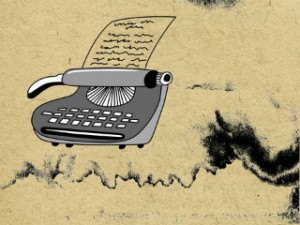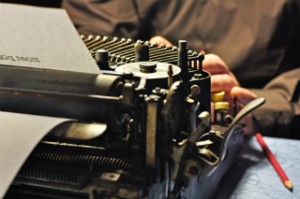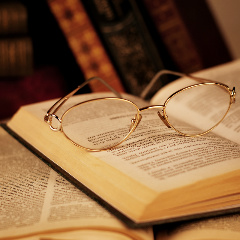What are you wearing? Sounds like something you’d hear on a cheesy erotic movie, right? Well, when you work from home, as most writers do, you need to think about that.
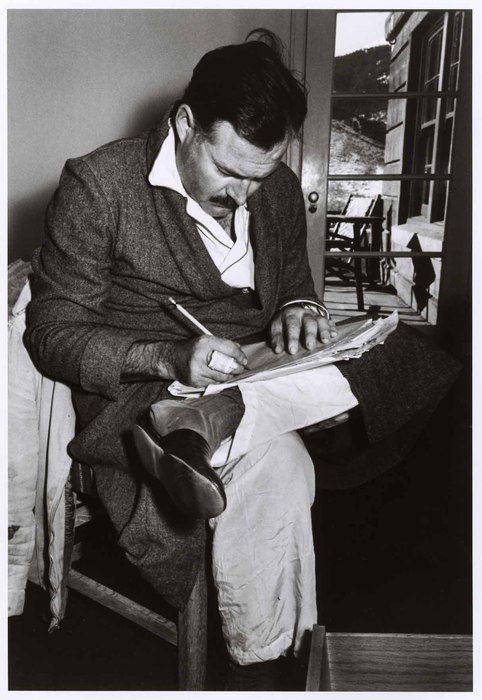
Are you the sort of writer who likes to get comfortable before you sit down to work? Maybe you don’t even change out of your PJ’s in the morning. Or maybe you change into them before you work in bed. Pajamas are the ultimate in comfort-wear: loose-fitting and soft, just begging you to relax and focus on your manuscript. My PJ’s are an old “Answers.com” t-shirt and a pair of baggy shorts. I usually don’t wear them to write in, though. When I try to write in bed, I get too comfy and end up dozing off…

Or maybe you’re the sort of writer who enjoys dressing up to get to work. Perhaps you need the reminder that this is a job and you should dress the part, as if you’re headed for the office. A no-nonsense business suit will make sure you don’t dilly-dally around and forget the ultimate goal: to finish that novel.
There are even writers who really get into the spirit of things and dress as their characters. I could easily do that. I have a lovely cowboy hat after all, and a period shirt and vest (although I have yet to find a pair of trousers that I really like). Maybe you enjoy a Victorian era ball gown or a morning suit. Or maybe you write science fiction and your outfit is a bit more out of the ordinary…
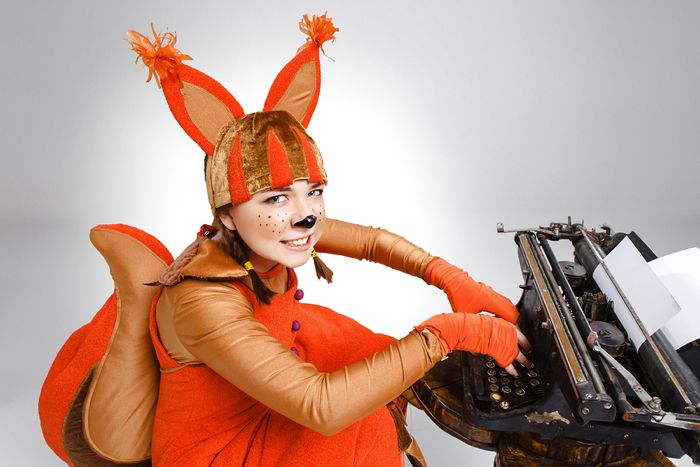
But you wanted to know what I wear to write. I’m afraid I fall somewhere in the middle. I generally do get out of bed and get dressed, although I don’t dress up. My preferred writing outfit is a comfy t-shirt and a pair of jeans. I usually do put on shoes, too, because I have a bad ankle that needs the support even if I’m just walking to the kitchen for a snack. My t-shirt usually has some sort of logo or sarcastic saying on it, usually fitting my mood for the day.
What about you? What are you wearing?
Over the past year or so, we’ve been hearing this term more and more: self-care. But what does it mean for the writer?
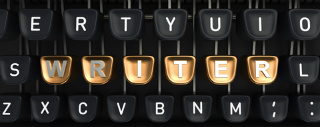
Self-care just means taking care of yourself so you’re healthier and mentally stable. For a writer, that means making sure you’re taking the time to do what you really enjoy: writing.
Here are some things you can do to make sure your inner writer is healthy and functional:
- Make time for writing, even if it’s only a small amount of time each day
- Get some exercise. Many times, ideas come to you when you’re taking a long walk or riding the exercise bike
- Schedule your writing time just as you schedule your “day job”
- Eat a healthy diet. You can’t run an engine on waste oil and expect the same results you’d get from premium fuel
- Make writing time sacred. Nobody should interrupt the writer unless it’s a true emergency (and a family argument isn’t an emergency)
- Get enough sleep. Your brain doesn’t work well when it’s tired and sluggish. Go to bed on time and set your alarm.
- Write whether you feel “inspired” or not. Make it a habit to write even if your “muse” isn’t present–and soon the muse will show up during office hours
- Take a shower. Self-care also includes things like bathing, brushing your teeth and hair, getting a regular physical from your doctor, and paying attention to your body’s signals
- Try “writing sprints.” Set an alarm for 5 or 10 minutes and do nothing but write for that time. No editing; no reading back over what you just wrote. Just produce words.
- Don’t beat yourself up. If the words just aren’t flowing the way you think they should be, have some patience. It takes time for your brain to get the idea that you’re taking this seriously, but it’ll eventually get on board with the rest of you.
What are some of your favorite self-care tips?
We’ve all been there: someone discovers you’re a writer, fixes you with a curious eye, and blurts out That Question.
Where do you get your ideas?
I usually say “www.ideas.com” and change the subject. Here are 10 more awkward questions you’ll hear – and how to respond.
- How much money do you make? I don’t know why, but people just assume writers a) all make what Stephen King makes and b) don’t mind talking about their salary. The best response here is a vague “Enough” and a quick change of subject.
- Will you read my novel? Or my friend’s or my relative’s or anybody else’s. The correct answer is “I’m sorry, but I just don’t have time.” If they seem serious, explain how they can go about finding a professional copy editor (and mention that those folks get paid for their hard work).
- Will you write a book with me/for me? Everybody has that One Great Idea … it’d make a fantastic book or movie. If only they had someone to help them write it, or to write it for them. If you’re truly interested in their idea, you can offer to help them (but don’t expect much out of someone who hasn’t actually sat down and tried to write on their own first). The better answer is “I’m sorry, but I just don’t have time.” You could explain how they can find a ghost writer if they seem serious (and mention that those folks get paid for their hard work).
- How do you get published? Here’s another would-be writer who’s never actually put any work or research into the craft. The polite answer is “You can find a ton of information on that subject on the internet and Writer’s Digest puts out a great book every year called ‘Writers’ Market’ to help you.”
- How are your books doing? People think this is expressing polite interest, even though it smacks of our first awkward question. The best answer is “They’re doing fine – have you bought your copy yet?”
- Is your book at the library? Most people have no idea how libraries (or bookstores) actually work. The best answer here is “I don’t know, but if you request a copy, they’ll get it for you.” You could also remind them to give you a review on Amazon and/or Goodreads once they’ve read it.
- Is your book on the bestseller list? Unless it actually is, the answer would be “Not yet, but if you buy a copy and tell all your friends to buy one, it might get there.”
- How do you find an agent? This one’s done a bit more work than the “How do you get published” questioner, but they’re still not applying themselves. The right answer is “Writer’s Digest puts out a great book every year called ‘Guide to Literary Agents.'”
- Have you been on any talk shows? Sometimes people equate “author” with “celebrity.” If they’re genuinely confused, you can politely remind them that most authors don’t get invited to talk shows. A good answer is “Not yet – how about you?”
- When will your book be made into a movie? Here’s another common misconception you might politely correct if you feel the need. The best answer is “I have no idea.”
And of course, you’re welcome to think up your own replies to “Where do you get your ideas?”
HERE’S a great article by Where Writers Win – how to use Pinterest as an author.
HERE’S a link to a great infographic: writing tools of famous writers!
There are a lot of “You know you’re a writer when–” sayings out there. You’ve all seen them. There’s one more you might not have seen: You know you’re a writer when you have a pile of “to be read” books somewhere in your house.
Writers read. It’s not just what we do to find information, or to look up just the right word. We read for the same reason you do: because we love it. Writers make some of the best readers. We toss “real life” out the window in a heartbeat and fall right into the world inside the book. And we’re reluctant to crawl back out once the story’s over.
Writers also make great readers because we know what’s going on behind the wizard’s curtain. We know how hard it is to come up with that perfect phrase, that pithy description. We appreciate good craft when we see it, and are usually quick to write and tell our comrade so, or at least to write a review of the book.
It’s not just about the enjoyment, though. Sure, it’s great to set the world aside for a few hours, but there’s more to reading that that.
Writers read twice. The first time a writer reads a great book, it’s just for the story. We lose ourselves within it and enjoy the tale for the tale’s sake. And it’s going to be read again for pleasure, usually over and over again. That’s not what I’m talking about.
Writers read to learn. After that first reading, when we decide that we love a book, we read it again almost immediately. We read it as though we’re sitting at the author’s knee. This time, we’re not falling into the story world, but hanging above it. We’re looking behind that curtain to see how all those levers and gears work.
What makes a great book stand out from the crowd? How does a great author create a great story? How do they handle description and dialogue? What are their tricks and techniques?
Writers read to emulate. We try to understand how it’s been done well, and we try to apply that to our own work. You know you’re a writer when you have a great big pile of books to scour through, a stack of other writers to analyze.
Who are your favorite authors? What books do you read over and over again?
